A common question I hear during workshops on data journalism is: “How can I find a good news story in data?”.
This is a big question, honestly, and it could have, at least, a couple of reasonable answers. Usually the first is about the method we use: reading data, put it in context, don’t feel satisfied to read just a database or to use only databases that come from the same source.
This last bit – seeking for more data and possibly from different sources – can make the difference and can lead you, by posing the right questions, to something that really deserved to be published.
Missing data
As Elisabetta Tola, a science journalist and trainer, said a few days ago in a panel about how we used data journalism to cover the Covid-19 pandemic, “the most interesting things can come from data we don’t have” (see around 1:08’). What does she mean? Surely, it has been and it is important to have clear numbers about how many people are sick, how many recover, how many vaccines have been injected, how many tests we are doing.
But it’s a specific task of the (data) journalist to look for what is missing, asking questions, possibly to different potential sources.
Let’s see two examples, both Italian, to explain this.
Ask the civil registry
Between March and April 2020, Isaia Invernizzi, a journalist who worked at the time at L’Eco di Bergamo, the local newspaper of one of the most affected provinces in Italy during the first wave, did a fundamental work starting from the fact that it was unclear how many people were dying.
He launched, together with Intwig, a company active in the data intelligence field, a data gathering asking 243 municipalities to share their information from the civil registries about people who passed away in these two months.
They got answers from 91 administrations and discovered that in the same months of 2019 the average number of deaths was about 1,700. One year later it was 7,700. This means the number of deceased increased by 6,000 people more than the average of the previous five years. Officially only 3,000 were certified as coronavirus victims.
Confirmation
In the middle of April 2020, a report by Istat, the national statistics office, confirmed what L’Eco di Bergamo found: from 1st March to 4 April 2020 in that province only the rate of dead people was increased by 537% compared to 2019. The national rate increased by 102%.
At present we don’t know yet how many of these people passed away because of coronavirus, but the the idea to look for these numbers, in a moment when the attention was entirely (and quite understandably) focused on the daily data about tests, patients and so on, has showed a valuable insights about the dreadful impact of Covid-19.
Forgotten patients
The second example has been published a few days ago and it’s a data driven investigation, Forgotten patients by the journalist Riccardo Saporiti, about what happened to those people who needed health care for diseases not related to Covid-19 but they couldn’t or they wouldn’t have it for the fear of contagion.
A decision by the Health Minister established a postponement of hospitalizations and outpatient services in all the country, according to specific parameters. It was an emergency rule, that actually didn’t consider that the pandemic was affecting different areas of the country in a different way. Only after some months, we started hearing the question: “What about non-Covid patients?”. Again, another aspect that went missing during the first emergency.
Data, answers, consequences
It took a long time and 200 FOIAs to local health services and hospitals to get some answers. They show, as Saporiti wrote, that “two out of three surgeries were postponed, more than one exam or outpatient visit out of three were deferred, just one in ten cancer screening performed during the first lockdown.”
For now, as the work highlights in different sections, we don’t know yet which will be the consequences of this decision.
Hopefully the less impactful for our health, but again this second work gives another chance – driven by an unanswered question – to see in detail a piece of reality that is important in terms of individual health and public decision on the topic.

